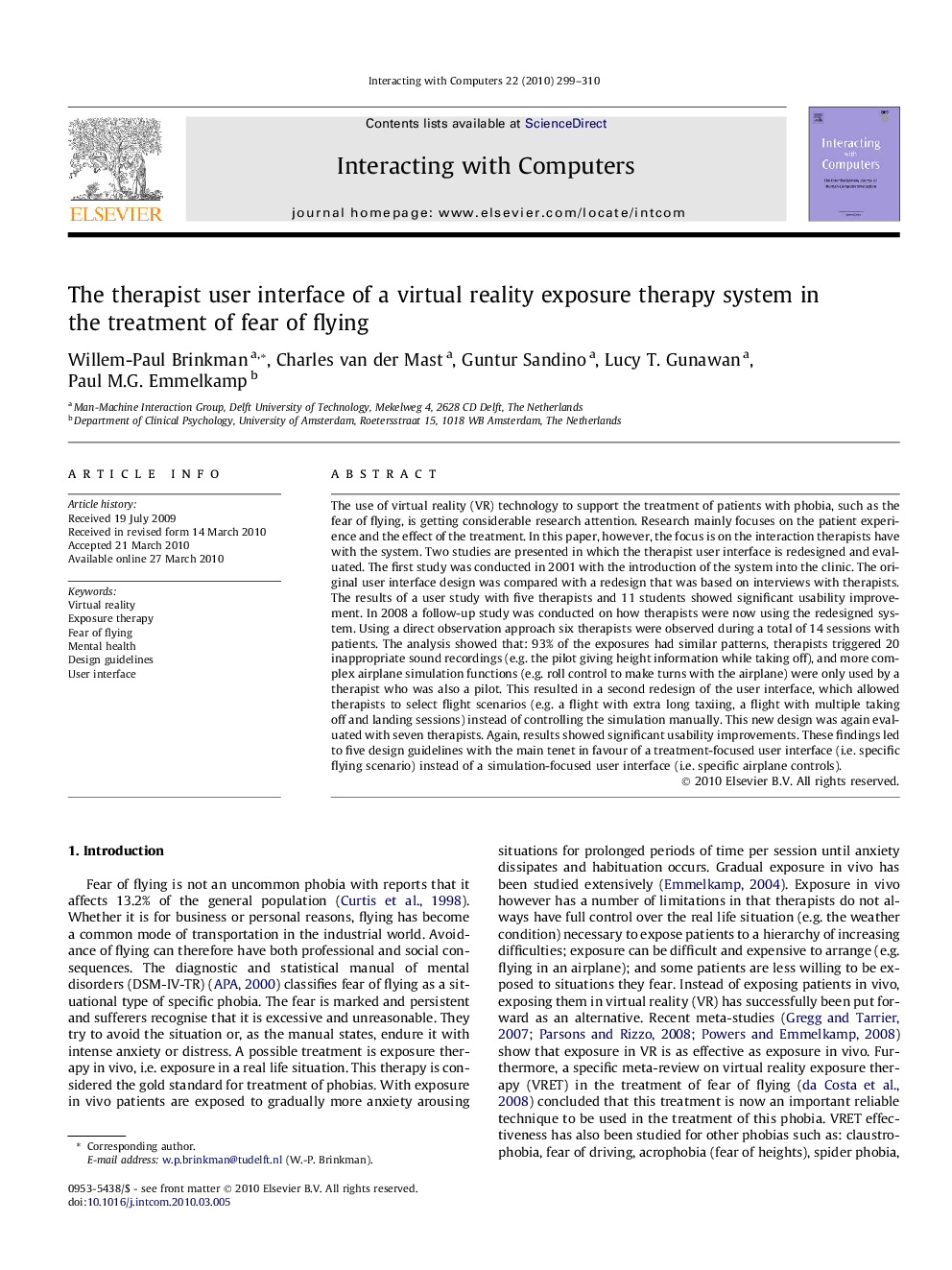| Article ID | Journal | Published Year | Pages | File Type |
|---|---|---|---|---|
| 550888 | Interacting with Computers | 2010 | 12 Pages |
The use of virtual reality (VR) technology to support the treatment of patients with phobia, such as the fear of flying, is getting considerable research attention. Research mainly focuses on the patient experience and the effect of the treatment. In this paper, however, the focus is on the interaction therapists have with the system. Two studies are presented in which the therapist user interface is redesigned and evaluated. The first study was conducted in 2001 with the introduction of the system into the clinic. The original user interface design was compared with a redesign that was based on interviews with therapists. The results of a user study with five therapists and 11 students showed significant usability improvement. In 2008 a follow-up study was conducted on how therapists were now using the redesigned system. Using a direct observation approach six therapists were observed during a total of 14 sessions with patients. The analysis showed that: 93% of the exposures had similar patterns, therapists triggered 20 inappropriate sound recordings (e.g. the pilot giving height information while taking off), and more complex airplane simulation functions (e.g. roll control to make turns with the airplane) were only used by a therapist who was also a pilot. This resulted in a second redesign of the user interface, which allowed therapists to select flight scenarios (e.g. a flight with extra long taxiing, a flight with multiple taking off and landing sessions) instead of controlling the simulation manually. This new design was again evaluated with seven therapists. Again, results showed significant usability improvements. These findings led to five design guidelines with the main tenet in favour of a treatment-focused user interface (i.e. specific flying scenario) instead of a simulation-focused user interface (i.e. specific airplane controls).
